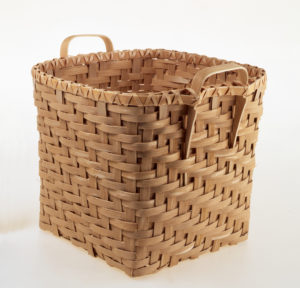Introduction
In the Eastern Woodlands, the area that is presently New York State gave rise to a confederation of six nations allied together in peace. Known as the Iroquois Confederacy, they call themselves Haudenosaunee, the People of the Longhouse.
The Iroquois occupied the land around the Great Lakes from southern Canada through much of present-day New York State; yet through trade, hunting, and warfare, their influence spread from the Atlantic Ocean to the Mississippi River. At the end of the 17th century, there were perhaps 15,000 Iroquois living on 1 million square miles of territory.
The Eastern Woodlands includes dense woods, mountains and hills, as well as rivers, lakes and streams. This area has four full seasons and plentiful rainfall and snow. The bounty of the land supports a wide variety of trees and other plants, mammals, bird and fish.
Journey Through the Seasons
The Iroquois people skillfully managed the natural bounty of the region by living in accordance with the seasons of the year, which give clues to appropriate activities tied to the environment. They hunted and fished, gathered nuts, berries, and other wild foods when these resources were available; they also cultivated productive crops, particularly corn, beans and squash. Nature provided well for the Iroquois, and the Iroquois have patterned their lives according to its cycles.
In the past, time was kept by a lunar calendar. New moons—such as Maple Moon, Planting Moon, Corn Harvest Moon, and Moon of the Falling Leaves—were named according to events of the season.
For example, even today in the spring, when the strawberries ripen and the sap runs in the sugar maple trees, traditional Iroquois people know it is time to collect these products. When the red oak leaves are the size of squirrels' feet, the frosts are over and it is safe to plant the corn.

Corn-Washing Basket
Cecilia Sunday (1919- ), Mohawk, St. Regis, Quebec, 1993
Black ash (Fraxinus nigra); L 31.0 x W 28.3 x H 25.7 cm); 35654-1
Among the Iroquois, the most common way to prepare corn is to make hominy. First, the kernels are boiled in water mixed with hardwood ashes to loosen the hulls. Then they are dunked up and down in water in a special washing basket, until the loosened hulls and ashes finally float free. The sieve-like base and tightly woven sides allow the water to drain from the bottom while the corn remains in the basket.
